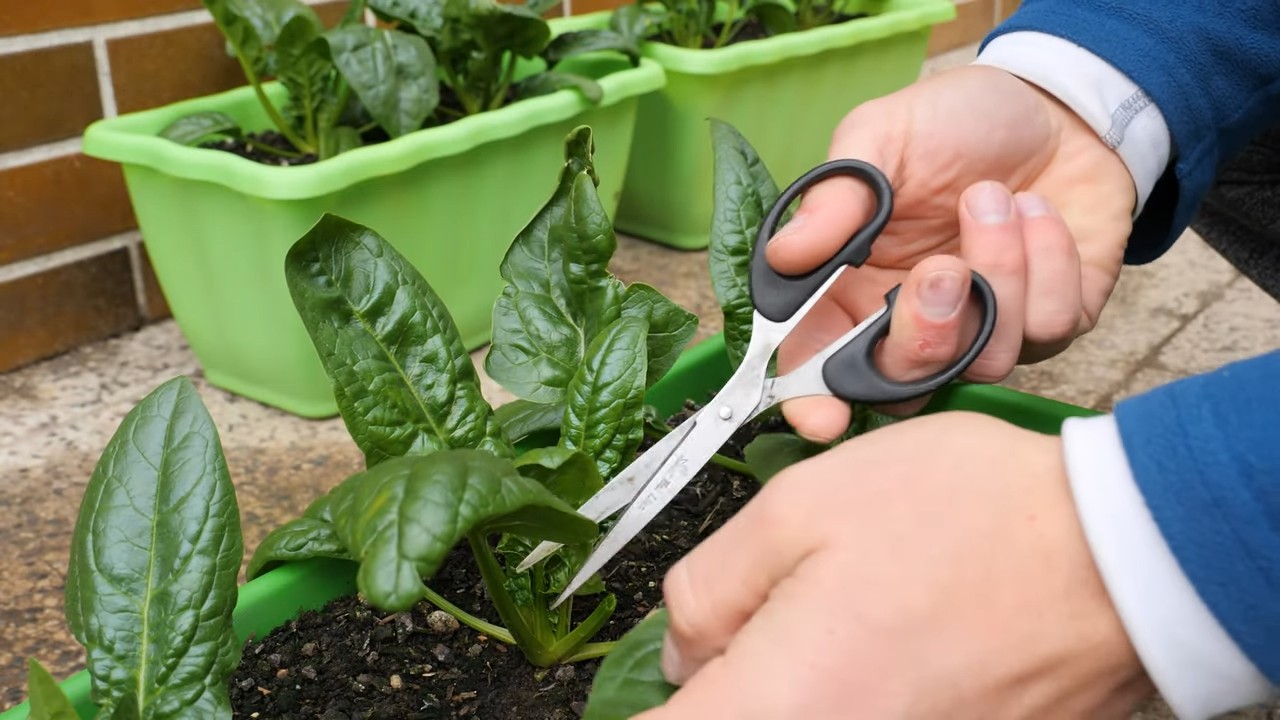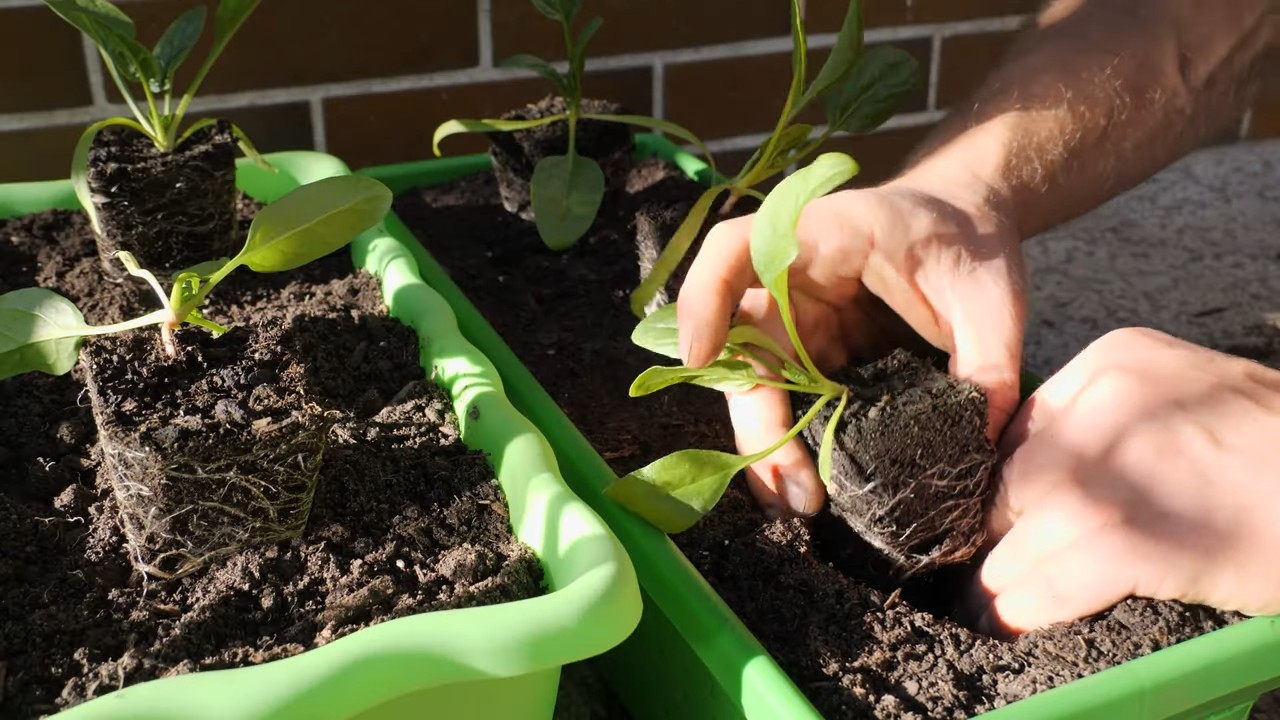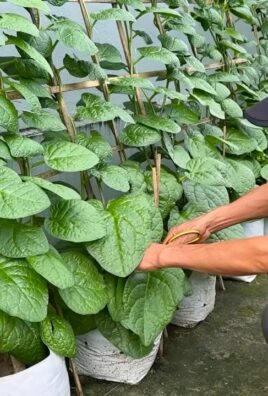Indoor Spinach Growing: Imagine fresh, vibrant spinach gracing your plate, harvested just moments before from your very own indoor garden! Forget those limp, pre-packaged greens from the grocery store. This isn’t just a dream; it’s an achievable reality with a few simple tricks and a little DIY spirit.
For centuries, humans have cultivated spinach, tracing its origins back to ancient Persia. It gradually spread across the globe, becoming a staple in cuisines worldwide, prized for its nutritional value and versatility. But traditionally, growing spinach meant having a garden and dealing with seasonal limitations. Not anymore!
In today’s fast-paced world, many of us lack the space or time for a traditional garden. That’s where the magic of indoor spinach growing comes in. This DIY guide is your passport to enjoying fresh, organic spinach year-round, regardless of your living situation. We’ll explore easy-to-implement hacks and techniques that will transform even the smallest apartment into a thriving green oasis. Learn how to optimize light, soil, and watering to ensure a bountiful harvest. Say goodbye to expensive store-bought spinach and hello to the satisfaction of growing your own delicious, healthy greens. I’m excited to share these tips with you!

Grow Your Own Spinach Indoors: A Beginner’s Guide
Hey there, fellow plant enthusiasts! Ever dreamt of having fresh, vibrant spinach readily available, right in your kitchen? Well, dream no more! Growing spinach indoors is surprisingly easy and rewarding. I’m going to walk you through everything you need to know to cultivate your own little spinach patch, regardless of the season. Let’s get started!
What You’ll Need
Before we dive into the nitty-gritty, let’s gather our supplies. Here’s a checklist of everything you’ll need to successfully grow spinach indoors:
* Spinach Seeds: Choose a variety that’s well-suited for indoor growing. ‘Baby’s Leaf Hybrid’ and ‘Space’ are popular choices.
* Containers: You’ll need containers with drainage holes. I recommend using pots that are at least 6 inches deep and wide. You can use individual pots or a larger container to grow multiple plants.
* Potting Mix: Use a high-quality, well-draining potting mix. Avoid using garden soil, as it can compact and hinder drainage.
* Grow Lights: Spinach needs plenty of light to thrive. If you don’t have a sunny windowsill, you’ll need to invest in grow lights. LED grow lights are energy-efficient and work great.
* Watering Can or Spray Bottle: For gentle watering.
* Optional: Seed starting tray, heat mat (for faster germination), liquid fertilizer.
Choosing the Right Spinach Variety
Not all spinach varieties are created equal, especially when it comes to indoor growing. Some varieties are more compact and better suited for containers. Here are a few of my favorites:
* Baby’s Leaf Hybrid: This is a classic choice for baby spinach. It’s fast-growing and produces tender leaves.
* Space: Another reliable variety that’s known for its disease resistance and smooth leaves.
* Bloomsdale Long Standing: This heirloom variety is heat-tolerant, making it a good option if your indoor environment tends to be warm.
* Winter Bloomsdale: As the name suggests, this variety is cold-hardy and can tolerate cooler temperatures.
Step-by-Step Instructions: Planting Your Spinach Seeds
Now for the fun part! Let’s get those seeds in the soil.
1. Prepare Your Containers: Fill your containers with potting mix, leaving about an inch of space at the top. Gently pat down the soil to create a level surface.
2. Sow the Seeds: Sprinkle the spinach seeds evenly over the surface of the soil. Aim for about 2-3 seeds per inch.
3. Cover the Seeds: Lightly cover the seeds with about 1/4 inch of potting mix.
4. Water Gently: Use a watering can or spray bottle to gently moisten the soil. Be careful not to overwater, as this can cause the seeds to rot.
5. Provide Warmth (Optional): If you’re using a heat mat, place your containers on the mat. This will help to speed up germination.
6. Cover with Plastic Wrap (Optional): Covering the containers with plastic wrap will help to retain moisture and create a greenhouse effect. Be sure to remove the plastic wrap once the seedlings emerge.
7. Place Under Grow Lights or in a Sunny Window: Position your containers under grow lights or in a sunny window that receives at least 6 hours of direct sunlight per day.
8. Wait for Germination: Spinach seeds typically germinate within 5-10 days. Keep the soil consistently moist during this time.
Caring for Your Indoor Spinach Plants
Once your spinach seedlings have emerged, it’s time to provide them with the care they need to thrive.
1. Thin the Seedlings: Once the seedlings have developed their first true leaves (the leaves that appear after the initial seed leaves), thin them out so that they are spaced about 2-3 inches apart. This will give them enough room to grow.
2. Water Regularly: Spinach needs consistent moisture to thrive. Water your plants whenever the top inch of soil feels dry to the touch. Avoid overwatering, as this can lead to root rot.
3. Provide Adequate Light: Spinach needs at least 6 hours of direct sunlight per day. If you’re using grow lights, keep them on for 12-14 hours per day. Position the lights a few inches above the plants.
4. Fertilize Sparingly: Spinach doesn’t need a lot of fertilizer. However, you can give your plants a boost by feeding them with a diluted liquid fertilizer every 2-3 weeks. Choose a fertilizer that’s high in nitrogen, which promotes leafy growth.
5. Maintain Cool Temperatures: Spinach prefers cool temperatures, ideally between 60-70°F (15-21°C). Avoid placing your plants near heat sources, such as radiators or vents.
6. Monitor for Pests and Diseases: Keep an eye out for common pests, such as aphids and spider mites. If you notice any pests, treat them with an insecticidal soap or neem oil. Spinach is also susceptible to fungal diseases, such as powdery mildew. To prevent fungal diseases, ensure good air circulation and avoid overwatering.
Harvesting Your Indoor Spinach
The best part of growing your own spinach is, of course, the harvest! You can start harvesting your spinach leaves when they are about 4-6 inches long.
1. Harvest Outer Leaves First: Use scissors or a knife to cut the outer leaves of the plant, leaving the inner leaves to continue growing. This is known as “cut and come again” harvesting.
2. Harvest Regularly: Harvesting regularly will encourage the plant to produce more leaves.
3. Store Your Harvest: Store your harvested spinach leaves in the refrigerator in a plastic bag or container. They will typically last for about a week.
Troubleshooting Common Problems
Even with the best care, you may encounter some challenges when growing spinach indoors. Here are a few common problems and how to solve them:
* Yellowing Leaves: Yellowing leaves can be a sign of overwatering, underwatering, or nutrient deficiency. Check the soil moisture and adjust your watering accordingly. If you suspect a nutrient deficiency, fertilize your plants with a diluted liquid fertilizer.
* Leggy Growth: Leggy growth (tall, spindly plants) is usually a sign of insufficient light. Move your plants to a sunnier location or provide them with more grow light.
* Slow Growth: Slow growth can be caused by a variety of factors, including insufficient light, cool temperatures, or nutrient deficiency. Make sure your plants are getting enough light and warmth, and fertilize them if necessary.
* Pests: Aphids and spider mites are common pests that can infest spinach plants. Treat them with an insecticidal soap or neem oil.
* Diseases: Powdery mildew is a common fungal disease that can affect spinach plants. To prevent powdery mildew, ensure good air circulation and avoid overwatering. If your plants develop powdery mildew, treat them with a fungicide.
Tips for Success
Here are a few extra tips to help you succeed in growing spinach indoors:
* Start with Fresh Seeds: Spinach seeds have a relatively short shelf life, so it’s important to start with fresh seeds.
* Use a Well-Draining Potting Mix: A well-draining potting mix will help to prevent root rot.
* Provide Adequate Light: Spinach needs plenty of light to thrive. If you don’t have a sunny windowsill, invest in grow lights.
* Water Regularly: Spinach needs consistent moisture to thrive. Water your plants whenever the top inch of soil feels dry to the touch.
* Fertilize Sparingly: Spinach doesn’t need a lot of fertilizer. However, you can give your plants a boost by feeding them with a diluted liquid fertilizer every 2-3 weeks.
* Maintain Cool Temperatures: Spinach prefers cool temperatures, ideally between 60-70°F (15-21°C).
* Harvest Regularly: Harvesting regularly will encourage the plant to produce more leaves.
Enjoy Your Homegrown Spinach!
And there you have it! You’re now equipped with the knowledge to grow your own delicious spinach indoors. Enjoy the satisfaction of harvesting fresh, homegrown greens whenever you want. Happy gardening!

Conclusion
So, there you have it! Mastering the art of indoor spinach growing is not only achievable but also incredibly rewarding. We’ve walked you through the simple steps, debunked common myths, and armed you with the knowledge to cultivate your own vibrant, leafy greens right in the comfort of your home. Why is this a must-try? Because it offers a constant supply of fresh, organic spinach, free from pesticides and the uncertainties of grocery store produce. Imagine the satisfaction of snipping off a handful of leaves for your morning smoothie, knowing exactly where they came from and how they were grown.
Beyond the convenience and health benefits, indoor spinach growing is a fantastic way to connect with nature, even in the smallest of spaces. It’s a calming, meditative activity that can bring a touch of green serenity to your urban dwelling. Plus, it’s a sustainable practice that reduces your carbon footprint by minimizing transportation and packaging waste.
Don’t be afraid to experiment with different varieties of spinach to find your favorites. Some popular choices for indoor growing include ‘Baby’s Leaf Hybrid,’ ‘Bloomsdale Long Standing,’ and ‘Tyee Hybrid.’ Each offers a slightly different flavor profile and texture, so exploring the options is part of the fun.
Consider these variations to personalize your indoor spinach garden:
* Vertical Gardening: If space is limited, explore vertical gardening options. Stackable planters or hanging baskets can maximize your growing area and add a visually appealing element to your home.
* Hydroponics: For a more advanced approach, try growing spinach hydroponically. This soilless method can lead to faster growth and higher yields.
* Succession Planting: To ensure a continuous harvest, practice succession planting. Sow new seeds every two to three weeks to have a steady supply of spinach throughout the year.
* Companion Planting: Enhance your spinach’s growth by planting it alongside compatible herbs like chamomile or dill. These herbs can deter pests and improve the overall health of your indoor garden.
We understand that embarking on a new gardening venture can feel daunting, but trust us, indoor spinach growing is surprisingly easy and forgiving. With a little attention and care, you’ll be enjoying fresh, delicious spinach in no time.
We wholeheartedly encourage you to give this DIY trick a try. Start small, learn as you go, and don’t be discouraged by initial setbacks. Gardening is a journey of continuous learning and discovery.
Once you’ve harvested your first batch of homegrown spinach, we’d love to hear about your experience! Share your tips, successes, and challenges in the comments below. Let’s build a community of indoor spinach growers and inspire others to embrace the joys of homegrown goodness. Happy growing!
Frequently Asked Questions (FAQ)
What is the best type of spinach to grow indoors?
While several spinach varieties thrive indoors, some are particularly well-suited for container gardening. ‘Baby’s Leaf Hybrid’ is a popular choice due to its compact size and quick growth. ‘Bloomsdale Long Standing’ is another excellent option, known for its heat tolerance and resistance to bolting (going to seed prematurely). ‘Tyee Hybrid’ is also a good choice, offering disease resistance and a mild flavor. Ultimately, the best type of spinach for you will depend on your personal preferences and growing conditions. Experiment with different varieties to find the one that performs best in your indoor environment.
How much light does indoor spinach need?
Spinach requires at least 6 hours of direct sunlight per day to thrive. If you don’t have a sunny windowsill, you can supplement with artificial grow lights. Fluorescent or LED grow lights are excellent choices, providing the necessary spectrum of light for healthy growth. Position the lights a few inches above the spinach plants and adjust as they grow. A timer can be used to ensure consistent light exposure. Insufficient light can result in leggy, pale plants with poor flavor.
What is the ideal temperature for growing spinach indoors?
Spinach prefers cool temperatures, ideally between 60°F and 70°F (15°C and 21°C). Avoid placing your spinach plants near heat sources, such as radiators or vents, as excessive heat can cause them to bolt. Good ventilation is also important to prevent fungal diseases. If your home tends to be warm, consider growing spinach during the cooler months of the year or using air conditioning to maintain a suitable temperature.
How often should I water my indoor spinach plants?
Water spinach regularly to keep the soil consistently moist but not waterlogged. Check the soil moisture by inserting your finger about an inch deep. If the soil feels dry, it’s time to water. Avoid overwatering, as this can lead to root rot. Ensure that your containers have drainage holes to allow excess water to escape. During warmer months, you may need to water more frequently.
What type of soil is best for growing spinach indoors?
Use a well-draining potting mix that is rich in organic matter. A mixture of peat moss, perlite, and vermiculite is a good option. Avoid using garden soil, as it can be too heavy and may contain pests or diseases. You can also amend your potting mix with compost or aged manure to provide additional nutrients.
How often should I fertilize my indoor spinach plants?
Spinach is a relatively light feeder, but it will benefit from occasional fertilization. Use a balanced liquid fertilizer diluted to half strength every two to three weeks. Avoid over-fertilizing, as this can lead to excessive leaf growth and reduced flavor. Organic fertilizers, such as fish emulsion or seaweed extract, are also excellent choices.
How do I harvest spinach from my indoor garden?
You can begin harvesting spinach leaves when they are about 4 to 6 inches long. Simply snip off the outer leaves with scissors or a knife, leaving the inner leaves to continue growing. This cut-and-come-again method allows you to harvest spinach continuously over several weeks. Avoid harvesting more than one-third of the plant at a time to ensure continued growth.
What are some common pests and diseases that affect indoor spinach?
Common pests that can affect indoor spinach include aphids, spider mites, and whiteflies. Regularly inspect your plants for signs of infestation and take action promptly. You can control pests by spraying with insecticidal soap or neem oil. Fungal diseases, such as powdery mildew, can also affect spinach. Ensure good ventilation and avoid overwatering to prevent these diseases. If necessary, use a fungicide to control the spread of infection.
How long does it take for spinach to grow indoors?
Spinach typically takes about 4 to 6 weeks to mature from seed to harvest. However, the exact time will depend on the variety of spinach, growing conditions, and your desired leaf size. With proper care and attention, you can enjoy a continuous harvest of fresh spinach from your indoor garden.
Can I grow spinach indoors year-round?
Yes, you can grow spinach indoors year-round, provided you can maintain the proper growing conditions. Pay close attention to light, temperature, and watering to ensure optimal growth. During the winter months, you may need to supplement with artificial grow lights to provide sufficient light. With a little planning and effort, you can enjoy fresh, homegrown spinach throughout the year.




Leave a Comment